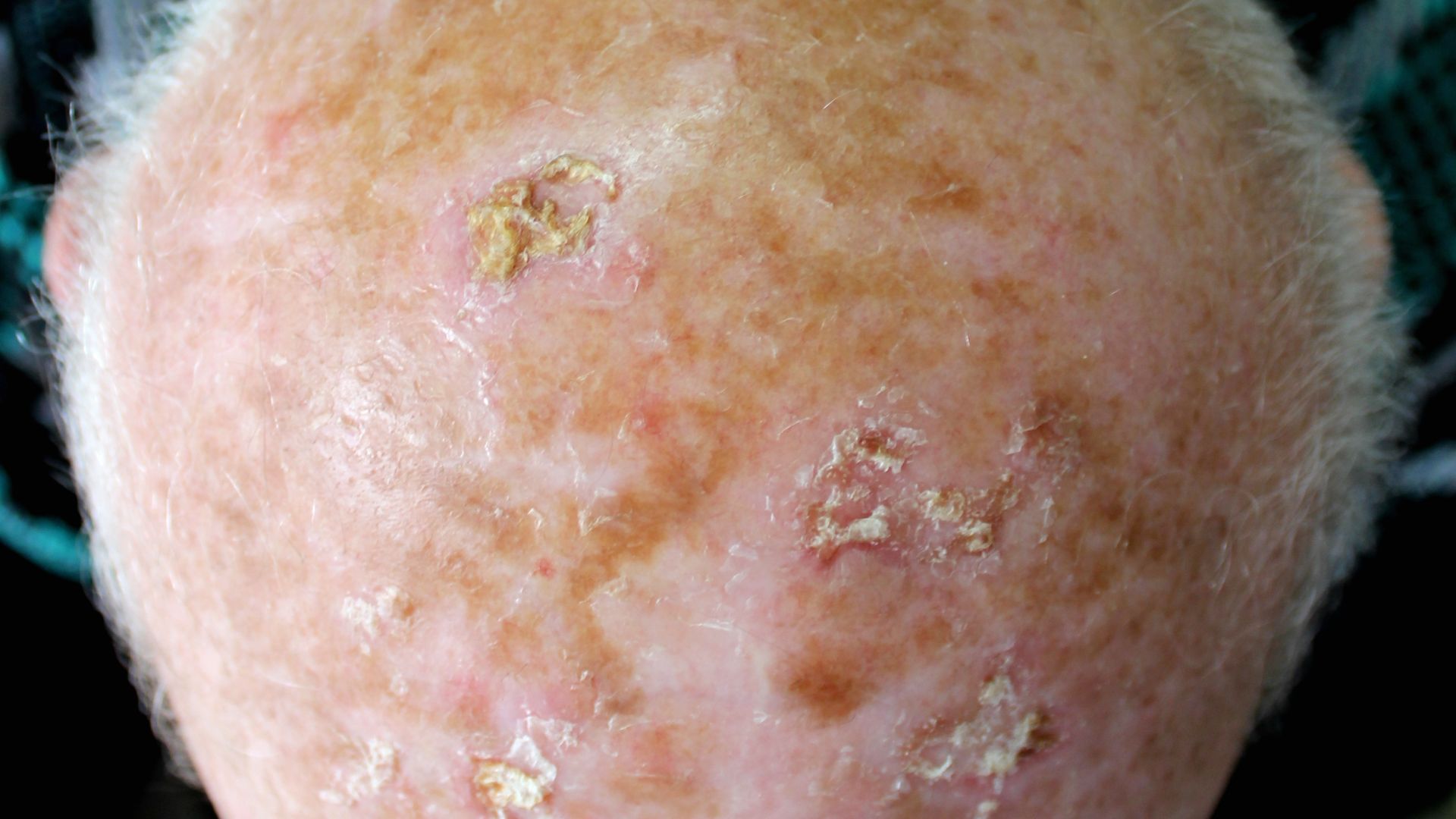
Actinic Keratosis – Statistics, Risks and Treatments Available
Actinic Keratosis (AK) is one of the most common form of skin lesions that we see, related to sun damage. Australia has the highest incidence of AKs in the world and not surprisingly, up to 60% of the population over 40 years old have AK in the state of Queensland. However, anyone who is regularly exposed to the Australian sun in Adelaide and the Fleurieu Peninsula can develop Actinic Keratosis.
Very early AKs can disappear or reduce in size with sun protective measures, and early AK’s can in most cases, be treated with success.
What Is Actinic Keratosis?
Actinic Keratosis is a rough and flat, pink, red or brown scaly patch on your skin that develops after many years of exposure to the sun. AKs can be itchy and have a burning sensation. They’re considered precancerous or an early form of aquamous cell carcinoma and commonly found on your face, ears, scalp, back of your neck, hands and forearms – basically any part of your body frequently exposed to sunshine.
Also known as a solar keratosis, an actinic keratosis is a warning sign that damage has occurred to your skin from too much UV radiation. Once you’ve adopted sun protective measures, they can disappear or minimise but can return. If you see rough scaly patches such as this that persist, please make an appointment with the team at Skintech to have them seen by our Skin Cancer College Accredited Doctors
Actinic Keratosis Facts And Statistics
Actinic Keratoses develop in the epidermis which is the upper most layer of the skin. Here are some facts and statistics from News Medical and Life Sciences.
- AKs grow very slowly and take years to develop
- Australia has the highest incidence of Actinic Keratosis in the world
- About 10% of AKs develop into squamous cell carcinomas, especially in people who have multiple AKs
- AKs are most common in older adults and seniors but rare in children or adolescents
- In Australia, an estimated 37-55% in Australian adults over the age of 40 have AKs
- It’s more common in men than women and this is likely to be associated with more time in the sun.
Diagnosing and treating AKs at this early state is essential to prevent further skin cancers from developing. If you have multiple scaly patches which might be itchy or irritable, call us to make an appointment.
What Increases The Risk Of Developing Actinic Keratosis?
As with all skin cancers, exposure to the sun and UV radiation increases the incidence of AKs so protection from UV becomes paramount to preventing further lesions developing.
Other reasons for the increased incidence of AKs include:
- People with fair skin and freckles, blond or red hair are the most prone to developing AKs
- People with a high-fat diet have a higher risk of developing actinic keratosis, which is also more common in men
- AKs occur in 10% in people aged between 20 and 30 years, and in 90% in people over 80 years old
- A compromised immune system has reduced ability to heal abnormal skin cells and can lead to further lesions of AKs
- People who work outdoors and have high exposure to UV radiation
- People who have had prior AKs are prone to developing more
What Treatments Are Available For Actinic Keratosis?
- Cryotherapy – freezing the lesion off with cryotherapy is often used with good success rates of around 90%. Liquid nitrogen is sprayed onto the patch of skin and the lesions are frozen off. The face heals within 3-7 days, the hands take longer around 3-4 weeks and the legs may take 6 weeks or more.
- Curettage and cautery – this technique also has a 90% success rate and involves scraping the lesion off the skin with a curette. Heat or electricity (cauterisation) is used to treat the base of the wound.
- Photodynamic therapy (PDT) – this technique uses light to focus on the lesion and destroy the abnormal cells. Success rates are 60-80%. Sometimes repeat visits are needed to treat the area fully.
- Topical creams – a cream can be applied to the AKs regularly over a few weeks to kill the abnormal cells. The creams used are chemotherapy creams called 5-fluorouracil cream and Imiquimod cream. Success rates are similar to PDT.
- Surgical excision – the lesion is completely removed under local anaesthetic and the wound may need stitches. Success rates are close to 100% but will often leave a scar.
If You Suspect Actinic Keratosis, Call Us For A Skin Check Up
When it comes to your skin, preventive healthcare is always the best approach. It doesn’t take much time to pop into the clinic for a skin check.
Skintech Medical, uses sophisticated diagnostic imaging to diagnose, monitor and track your skin lesions. By having your history on file, we’re able to keep track of any changes to existing Actinic Keratoses or the development of new ones, which enables us to be proactive.
Our clinic has accredited and dedicated Skin Cancer Doctors with extensive training through the Skin Cancer College of Australasia.